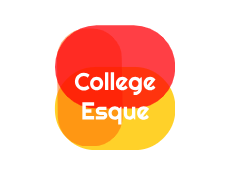Many scholarship opportunities exist for all ages, from elementary to graduate school. These scholarships can be funded by small-town businesses, large corporations, national, state, regional, and county affiliations, and even community clubs and niche organizations.
High school counselors are an excellent scholarship resource for high school students. Most colleges have a scholarship site that lists financial support options related to the school.
Your parents’ employers may also offer scholarship opportunities. Children of military veterans or active-duty parents have various scholarship opportunities, for example. Pay attention to your favorite products and brands, too. They may share scholarships through email or on their product packaging. However, sifting through these scholarship opportunities can be challenging.
Students, parents, and educators find that using Fastweb’s free scholarship matching tool makes the scholarship search more manageable and saves them a lot of time. Students can create a free profile using their attributes to be notified of scholarship opportunities they should consider applying for. Fastweb users can also organize their top-choice scholarships within their profile page to stay focused.
Once you’ve reviewed scholarships, pick the scholarships you want to apply for. Select the scholarship application with the closest deadline and focus on that one scholarship application before you move on to others, so you don’t become overwhelmed.
Take Note of Each Scholarship’s Requirements
All scholarship requirements differ depending on the type of scholarship you’re applying for. There are no-essay scholarships, video scholarships, essay scholarships, merit scholarships, and more.
Review the specific requirements for each scholarship and note the application deadlines. Some scholarships require different submission mediums and file types. These could be voice recordings or sound bites such as MP3s, personal statements or essays via Word documents, PDFs, social media videos or posts with a specific tag or hashtag, in-person interviews, and more.
Remember to note the application deadlines and how the scholarship application should be submitted. Most scholarship providers require applications to be submitted online. While rare, some scholarship applications must be submitted tangibly, on paper, and mailed!
Gather Your Personal Information
You’ll likely need to use the same personal information applications. This includes:
• Contact Information: address, phone number, email address, etc.
• High School or College Transcripts: official or unofficial
• Standardized Test Scores: ASVAB, ACT, SAT
• Letters of recommendation: Check to see if the scholarship provider wants the recommender to submit or sign your letter personally.
• Proof of Citizenship: Birth certificates, passports, state ID, tribal nation ID, voter registration, etc.
• Essays, Videos, Personal Statements, etc.
• Financial Information: These requirements are usually for need-based awards and may include your FAFSA Submission Summary and/or parental household income and/or assets. Never provide bank account or credit card information, as these are likely scholarship scams!
Creating a folder with the above-standard information is a good idea, as you’ll submit multiple scholarship applications. Consider making a master Scholarship Application folder with subfolders for your transcripts, letters of recommendation, essays, and other essentials. This will save you time, help you remember to include essentials, and boost your chances of winning the scholarship!
Prepare Your Academic Records
Merit scholarships almost always require transcripts as a record of academic performance, course load, and diploma status. The scholarship committee uses transcripts to prove GPA, course rigor, student involvement, and educational awards.
Review the scholarship application requirements to determine if you need an official or unofficial transcript. High school students usually get their transcripts from the school counselor or office. In contrast, college students should contact the registrar office for their transcripts.
Request Your Letters of Recommendations
Your recommendation letters are important as they highlight your best qualities and top off any application. These usually notable people vouch for your abilities and dote on your strengths.
Choosing the Right Recommenders
Be sure you pick a recommender who likes you and has seen you at your best. The recommender should be able to provide clear examples of your personal strengths and potential. The best letters of recommendation come from teachers, professors, supervisors, managers, and notable community leaders, such as clergy members.
How to Request a Letter of Recommendation
Once you’ve picked a handful of people you’d like to write a letter on your behalf, ask them in person and send them a formal request via a note or email. Give them plenty of time to produce your letter of recommendation, but also be clear about when you’ll need their letters. Don’t ask to have the letters back the day before the scholarship deadline; add some extra time for your recommenders and yourself! Consider providing them with supporting documents like your student resume or brag sheet if you have one.
Write Your Personal Statement or Scholarship Essay
Save your essays, as you can use parts to create or modify new ones. This includes your personal statement. This is where it’s wise to create a folder labeled, “Essays” so you can have access to all versions. It is okay to reuse essays but be sure you have clearly addressed the essay prompt and direction. Avoiding the essay prompt is one of the quickest ways to have your scholarship application thrown out.
You’ll need to proofread your essay a few times and on different days to avoid errors.
Next, ask your peers or instructors if they’ll proofread your essay two more times. Having at least two independent reviewers besides yourself is a good idea. Ensure you provide them with an essay prompt to see if they feel your essay clearly addressed the prompt and followed instructions.
Pay attention to the minimum and maximum word count requirements. Scholarship judges are looking to see if you can follow simple instructions!
Prepare Your Financial Information
Every student should complete the Free Application for Federal Student Aid (FAFSA), and completing this form will require specific financial information. Depending on the timeline, some scholarship providers may require applicants to have submitted their FAFSA as a scholarship requirement. Other scholarship applications may ask for tax returns, income statements, or assets to prove financial need. It’s a good idea to begin gathering these key financial pieces!

